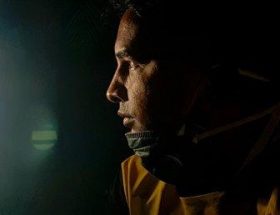Aishik Chanda
Kothimbirwadi (Beed, Maha), Oct 26
“Darte hai humse woh (They are scared of us),” pat came the reply from 10-year-old Rajesh Kothimbire when asked why he and his group of 6 kids from the Maratha community not let Dalit Mahar and Maang children play with them.
“They are dirty and also don’t bring ball and bat,” justified 12-year-old Markand Kothimbire, who was standing behind Rajesh playing with his locket that is in the shape of “bhagwa” flag of Shivaji.
In Kothimbirwadi, a non-descriptive village settled deep in northern Deccan Plateau off the highway leading to Telgaon in Beed district of Marathwada, children pick up the “we-they” basis of discrimination at a tender age. The village, with a population of 1080, is overtly dominated by the Marathas both in terms of population, commerce and every aspect of daily life.
However, after the panchayat was reserved, Dalits got their first representative as the panchayat pradhan in Sunil Pattekar, who is also the most educated person in the entire village.
“Even though I am the most educated and the panchayat head, I still don’t get the due respect from the Marathas that I deserve,” said Mr Pattekar, who through “Dalit Basti Sudhaar Yojna” has brought pucca roads and borewell to the Dalit part of the village.
“The pucca road in our part did not go well with the Marathas. Despite several pleas, still they defecate on the sides of the road every morning,” Mr Pattekar, who converted to Buddhism some 10 years ago, said.
The major Dalit communities in the village are the Buddhist Mahars and the Hindu Maangs (also called Matangs). Though the Mahars don’t enter the overarching Hanuman temple bang in the centre of the village, which is also the tallest structure, the Maangs are not allowed to enter the temple.
“The last time a Maang tried to enter the temple was three years before. Marathas opposed, police was summoned and a meeting held. In the meeting, Marathas said ‘if you didn’t enter the temple till now, why do you want to enter it now?’,” the panchayat pradhan said.
The Dalit children, seen playing gilli danda in their part of the village, when asked why they don’t play cricket with the Maratha kids, coldly shrug, “they don’t allow us to play with them. They used to shoo us away whenever we went to play. So, we stopped going.”
None of the Maratha men in the main chaupal (sitting area under a big tree where elders of a village sit and hold meetings) opposite the Hanuman mandir would oppenly accept about their prejudice but we didn’t find any Dalit in and around the Maratha chaupal. The Dalits have their own chaupal, which is not as glamourous as the Maratha one. It is plastered with cow dung as compared to the smooth, cemented surface of the sitting area of the Maratha chaupal.
“We don’t eat at their marriages as we are asked to sit in a separate row, which should be 10 metres from the Maratha row. Dalits can’t digest this insult anymore, so we have stopped eating at their marriages. We just visit, exchange pleasantries and come back,” said Ajinkya Shinde, a cotton farmer.
However, the older Maratha kids enthusiastically showing us the lake and the stone mine of the village, say that they are the “real” oppressed. “We are the Dalits of this age. We don’t have any reservation. We have to face tough competition at every levels, said 18-year-old Mohit Kothimbire.
“Nahi Nahi. Shut up. Be proud that you were born a Maratha,” comes from 19-year-old Mangesh Kothimbire standing beside Mohit.
~~~
The writer is pursuing M.A. in Dalit and Tribal Studies and Action at Tata Institute of Social Sciences. He was a working journalist at The New Indian Express and Deccan Chronicle at Hyderabad. He is still writing as an independent journalist








